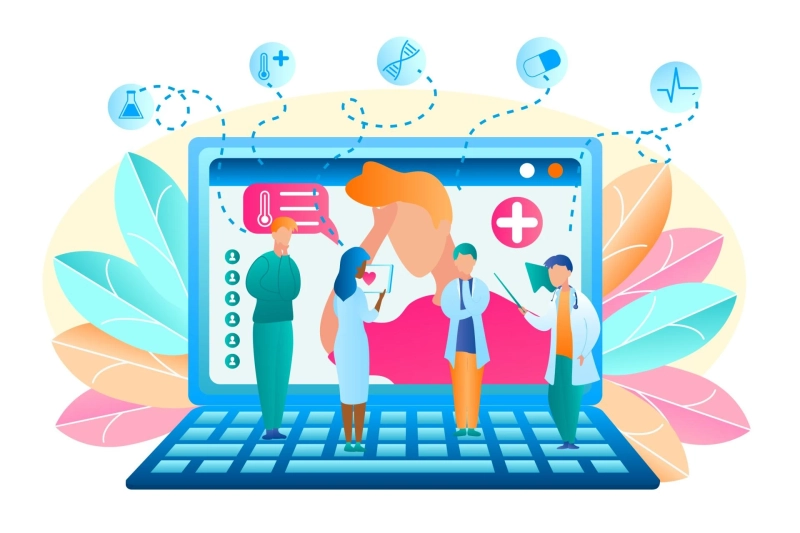In these days, social media is no longer just a branding tool, it’s a powerful driver of B2B sales. Nowhere is this more evident than in the healthcare industry, where professionals seek valuable connections, insights, and solutions that drive business growth. LinkedIn and other social media platforms have revolutionized the way healthcare companies reach decision-makers, engage with prospects, and close deals. But how can you leverage these platforms effectively to generate leads and grow sales in the competitive healthcare sector?
Understanding the Power of LinkedIn for B2B Healthcare Sales
LinkedIn has established itself as the premier platform for B2B sales, especially in niche markets like healthcare. With millions of healthcare executives, hospital administrators, and medical professionals actively using LinkedIn, the platform provides a goldmine of opportunities for sales and networking.
A strategic LinkedIn approach begins with optimizing your company’s profile and personal branding. Your business page should reflect industry authority with a clear description, engaging content, and credibility indicators such as recommendations and endorsements. Sales representatives should also ensure their personal profiles highlight their expertise, showcasing valuable content and a strong professional network.
Engaging with LinkedIn’s search and targeting features allows you to find potential leads efficiently. The platform’s advanced search filters help identify key decision-makers based on location, industry, job title, and more. Using LinkedIn Sales Navigator, a premium tool, takes prospecting to the next level by offering deeper insights and lead recommendations.
Once you identified the right connections, building relationship becomes crucial. Personalized connection requests, meaningful engagement with prospects’ content, and insightful LinkedIn articles can help establish trust. Healthcare professionals appreciate informative discussions and thought leadership rather than overt sales pitches. Sharing case studies, healthcare trends, or expert opinions positions your brand as a knowledgeable industry player.
Social Selling on LinkedIn: A Step Beyond Cold Outreach
Traditional cold outreach often falls flat in the healthcare sector, where professionals are inundated with sales messages. Instead, social media engagement helps for fostering relationships through genuine engagement and yields better results. Consistently engaging with prospects’ posts by commenting and offering value-driven insights makes your presence known. Hosting LinkedIn Live sessions or webinars on relevant topics also creates direct engagement opportunities with key stakeholders.
Additionally, LinkedIn Groups serve as a valuable asset for healthcare B2B sales. Participating in industry-specific groups or even creating your own community fosters conversations and provides direct access to highly engaged professionals. This creates an organic way to nurture relationships before transitioning into a sales discussion.
Expanding Reach with Other Social Media Platforms
While LinkedIn is the primary channel for B2B healthcare sales, integrating other social media platforms amplifies reach and engagement. Twitter, for instance, is widely used by healthcare professionals to stay updated on industry trends. By sharing insightful posts, commenting on trending healthcare discussions, and engaging with influential figures, brands can establish credibility and attract interest.
Facebook and Instagram, though traditionally more B2C-oriented, also offer opportunities in B2B healthcare sales. Facebook Groups provide a platform to engage with niche communities, while Instagram’s visual appeal works well for medical technology and healthcare solution providers. Behind-the-scenes glimpses, expert interviews, and infographics can generate significant engagement.
YouTube is another underutilized tool in healthcare B2B sales. Video marketing is rapidly gaining traction, with professionals consuming more video content than ever before. Creating explainer videos, product demos, and customer testimonials tailored for healthcare professionals enhances trust and provides valuable information in an easily digestible format.
Leveraging LinkedIn Ads and Paid Social Strategies
Organic engagement is crucial, but paid advertising accelerates reach and lead generation. LinkedIn Ads, particularly Sponsored Content and Message Ads, allow businesses to target specific healthcare professionals with precision. Promoting whitepapers, webinars, and case studies through these ads can attract highly relevant leads.
Similarly, paid campaigns on Facebook and Twitter can drive engagement, particularly when promoting industry reports or exclusive events. A well-structured retargeting strategy ensures that potential leads who have engaged with your content are nurtured through additional touchpoints, increasing conversion chances.
Using Data and Email Marketing to Strengthen Social Media Efforts
Data-driven decision-making enhances the effectiveness of social selling. Analyzing engagement metrics on LinkedIn and other social platforms helps refine content strategies and outreach tactics.
Integrating social media efforts with email marketing also strengthens lead nurturing. For example, a Healthcare Email List provides direct access to healthcare professionals, enabling businesses to complement their social media interactions with personalized email campaigns. By linking a valuable content offer, such as an industry report, to an email outreach strategy, companies can convert social media engagement into actionable sales opportunities.
Final Thoughts: Building Long-Term Relationships for B2B Success
The key to B2B sales in the healthcare industry is trust. Unlike fast-moving consumer industries, healthcare professionals and decision-makers take time to evaluate partnerships. Therefore, a consistent, value-driven presence on LinkedIn and other social media platforms is essential for success.
Instead of direct selling, businesses should focus on educating and engaging their target audience. Thoughtful content, meaningful interactions, and strategic advertising campaigns create an ecosystem where prospects naturally move through the sales funnel. By integrating social selling, paid strategies, and email marketing, businesses can successfully use LinkedIn and social media to drive healthcare B2B sales and build long-lasting professional relationships.



